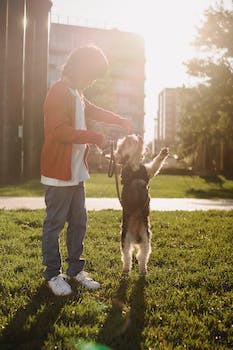As a new puppy owner, I’ve been on a journey to find the best treats for training my furry little friend. It’s been a fun and rewarding experience, and I want to share what I’ve learned with other pet owners who are in the same boat.
What to Look for in Puppy Training Treats
When choosing treats for your puppy, there are a few things to keep in mind:

- Size: The treats should be small enough that your puppy can eat them quickly, but not so small that they don’t feel satisfied.
- Texture: Some puppies prefer crunchy treats, while others prefer soft treats. Experiment with different textures to see what your pup likes best.
- Nutrition: Look for treats that are made with high-quality ingredients, and avoid those that are high in sugar or artificial additives.
- Flavor: This might be the most important factor! Choose treats that your puppy finds irresistible, and use them sparingly so they don’t lose their appeal.
Types of Treats to Consider
There are many different types of treats on the market, so it can be overwhelming to choose. Here are a few options to consider:
- Bite-sized training treats: These are small, soft treats that are perfect for training sessions. They come in a variety of flavors and are easy to carry in a pocket or treat bag.
- Freeze-dried meat: Many puppies love the taste and smell of freeze-dried meat treats, which are high in protein and low in calories. They can be broken into small pieces for training purposes.
- Bully sticks: These are natural chews made from beef or buffalo that are great for keeping puppies occupied and satisfied. They can be cut into small pieces for training treats.
- Vegetables: Some puppies enjoy crunchy vegetables like carrots or green beans as a healthy treat option.
How to Use Treats for Training
Treats are a powerful tool for training your puppy, but it’s important to use them correctly. Here are a few tips:
- Use treats as a reward for good behavior, rather than as a bribe.
- Keep training sessions short and frequent, and use treats sparingly so your puppy doesn’t get too full.
- Pair treats with positive reinforcement, such as praise or a belly rub.
- Gradually phase out treats as your puppy learns the desired behavior.
Final Thoughts
Finding the best treats for training your puppy is a fun and rewarding process. By considering factors like size, texture, nutrition, and flavor, and experimenting with different types of treats, you can find the perfect reward for your furry friend. Remember to use treats wisely and pair them with positive reinforcement for the best results. Happy training!